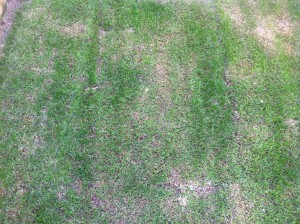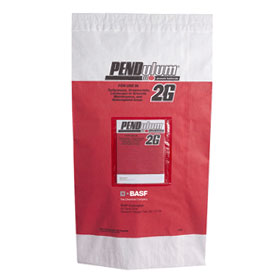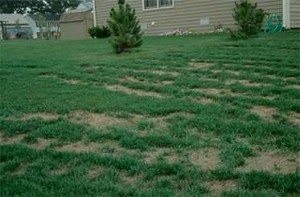Feb
Pre-Emergent Weed Control/Watering/Fertilizer
We are spending lots of time outside, and I know you all want to have your California and Arizona lawn looking its best! I’d like to talk about a few weeds that may be starting to appear in your lawn that are perennial problems. Let’s discuss getting down a pre-emergent herbicide on your lawn before all the spring and summer annuals start to show their faces. Weather obviously plays a key role in everything we do concerning turfgrass so it is important to get the timing right.
This has been a mild winter with little rain causing the ground temperature to stay slightly warmer than normal so we will have some early season weed issues. If you are in a cooler part of town and are still getting hit with the occasional frosts I would hold off until the first part of March. These cool areas can get the pre-emergent down as late as the middle of March, while areas such as Phoenix and Palm Desert should be putting one down between now and the end of the month.
Since most homeowners have an overseeded lawn for the winter I want to make it clear that there are two options on a herbicide bag. One is overseeded rates and the other is non-overseeded rates. If you would like to keep your ryegrass make sure that you follow the overseeded rate or it could take a turn for the worse rather quickly.
Applying a pre-emergent is not always the answer, so make sure you know the following before you start.
1. Pre-emergents don’t kill weeds and seeds that are present, they keep them from growing.
2. A pre-emergent is designed to stop a weed from emerging from the ground initially so timing is very important. As I stated earlier temperature is the key factor in determining when to put down the application. The best time to apply the pre-emergent is when soil temperatures are consistently above 50 degrees first thing in the morning, not at 3 pm. No you don’t need to get out at the crack of dawn to check, 8:00-10:00 AM is fine. For Phoenix and Palm Desert we are in that range now and they can be effectively applied between now and the end of the month.
3. If you would rather not apply a herbicide there is the option of using corn gluten to prevent weeds from appearing. Corn gluten works naturally by preventing seeds from rooting into the ground. You can use it for control of crabgrass, dandelions, pigweed, purslane, lambs quarters, foxtail and barnyard grass. Corn gluten is a very safe and environmentally friendly option but you may not see the same control that you will with some of the other pre-emergents on the market.
4. The next statement tells you the importance of keeping your lawn healthy and strong. Weed control in turf decreases grass competition, increases turf establishment rates, and decreases new grow-in time. Most people are growing in sod but if you happen to growing in stolons or seed this upcoming season this is especially important because weeds will take every avenue of growth that is offered to them.
If your lawn is thin be aware that it is prone to developing a large weed population
Pre-Emergent Weed Control
Here is a small list of some of the more popular pre-emergents on the market for bermudagrass and paspalum and they can be picked up at most specialty stores and used safely. Some of these do require a certified applicator to apply so you may want to contact a weed company to apply them for you. You will not be able to purchase the restricted use pesticides without a license. Many stores will carry there own generic brand of these chemicals but make sure you are getting the same active ingredient. If you cannot find one of these products in the store most of them are available online to ship to your door. Herbicides are generally not cheap but they are effective when used right so make sure you do some research.
1. Barricade 65WG (Prodiamine)
2. Dimension (dithiopyr)
3. Ronstar (oxadiazon)
4. Pendulum (pendimethalin)
Before making an application of a pre-emergent herbicide make sure you take a look at the following:
1. Irrigate afterwards, water activates pre-emergent herbicides.
2. Measure your lawn surface area and calibrate your spreader properly prior to application. Applying more herbicide than is necessary could cause damage to your lawn.
3. If you are starting to see a little emergence of crabgrass or poa after the product has been applied it is okay to make a second application of some products over the missed areas. Consult with the label prior to making a second application.
4. If you have recently installed your turf (within the last 3 months) you should withhold all pre-emergent herbicide applications so you do not damage the root system.
Pre-emergents are a great asset to home and landscape management, but if used improperly can be your worst nightmare. Before heading out to buy a product make sure you have a plan of attack and consult with the chemical label to see if the weeds you have had in the past are controlled by the product you are purchasing.
Over applying a herbide can result in a pretty poor lawn for months
I had a question last week about removing the poa annua from dormant turf using a chemical and there are several chemicals out there that can control them such as revolver or monument. These chemicals are for licensed applicators only so if you are experiencing a poa annua breakout and want to get it under control consult a pesticde company to make the application. If you have ryegrass and the poa annua is starting to show there is not a chemical that will wipe it out without also killing your ryegrass. Do not be fooled by any product that says it will control poa completely because if it existed most golf courses and landscape settings would be poa free.
Spring watering and fertilizing guide
A common question that I receive at this time of the year is asking how much water should be applied now that the temperatures are warming up and when will my grass come out of dormancy?
Water – Overseeded lawns for the month of February need no more than 20-30 minutes two times per week. Your ryegrass roots are not as deep as your bermudagrass roots in the summer but it is still best to water deep and infrequently. You should be able to stick a screwdriver 6-8 inches in the ground after watering.
If you have dormant turf it is a good time to start to give it the occasional blast of water to awaken it slowly. During December and January one application a month is sufficient but as the soil temperature continues to warm up so does the need to increase your watering. For the rest of this month I would apply 30 minutes every other week and starting in March you can go to one day per week until you start to see the lawn really green up.
Fertilizer – The soil temperatures have come up quite a bit, but I still recommend foliar feeding to get through this month. If your next fertilizer application is not until March an application of granular fertilizer is a great way to wake up the grass and get it growing. This is also a great application on dormant turf as a starter fertilizer.
Your grass will start to green up in early March if you have paspalum and early April for bermudagrasses. The paspalums are typically 4-6 weeks earlier than a bermudagrass.
I hope this answers all of your current questions and if anything arises please hit the “Ask Jay” button at the top right corner of this page and I will get back to you asap.
Until next time,
Jay




